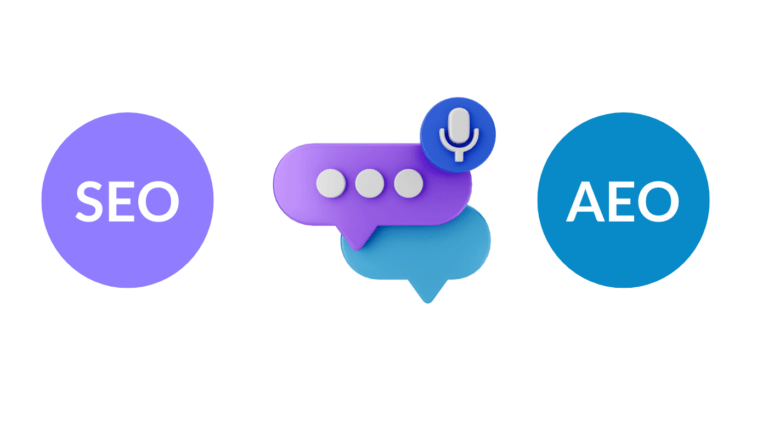Technical SEO Audit Checklist for Enterprise Websites
Comprehensive or complete search optimization is as much related to effective technical SEO as it is to user responsiveness and content. To make your website most favorable for search engine positions, you have to ensure that your strategy for technical SEO is without errors. And in doing this, a technical SEO audit checklist can help.
Google or Bing search engine algorithms send crawlers to your website to check the JavaScript, HTML code, performance, structure and a lot more. This signifies that a completely optimized website requires more than just keyword density and quality content for effective SEO results. Different online marketers and business owners understand that SEO can be essential, but SEO technical audits seem complicated for people who do not have any experience.
The best method to identify what you require is to make an SEO technical audit checklist to know your website’s well-being. Check the audit guide below to make sure that your technical SEO is complete.
What is Technical SEO Audit?
Technical SEO Audit is a process of making sure that a website fulfills the technical prerequisites of present search engines with the target of increased organic rankings. Significant elements of technical Search Engine Optimization are crawling, indexing, rendering & site planning.
Why Is Technical SEO Important for Enterprise Websites?
You can have a successful website with the finest content. But if your technical SEO is not up to the mark, then you are not ranking anywhere. At the most fundamental level, Google and different search engines must be able to do page crawling, discovering, rendering and indexing on your site.
Even though Google indexes all of your website’s content, your work still needs to be completed. That is because, for your website to be completely technically SEO optimized, your website’s pages must be safe, mobile optimized, free from copied content, quick-loading and many other things essential for technical optimization. So, the more effortless you make it for Google to go through your content, the increased possibility you have to rank at the top.
Thorough Exploration of Technical SEO Audits
A technical SEO audit is a process of reviewing your website to know how effectively it is working on search engines. It can be employed to find technical problems that are stopping a website from positioning as high as feasible.
Understanding Technical SEO Audits
Technical SEO audits for a website are the best way to make actionable strategies to surpass your competitors, check opportunities for your website, search and fix exit ends, and offer better client experiences.
You have to do technical audits, on-page audits, and off-page audits on a daily basis. As you check your audit, you will get places where you can enhance or optimize your website performance to increase ranks and keep website visitors pleased. You might not be capable of fixing each error in one go, but you can find out what is going wrong and create a plan to resolve it.
The Significance in the Enterprise Arena
Like an enterprise, one thing is for sure: you have to keep a tab of your online presence continuously. That is where an enterprise technical SEO audit can create all the difference.
SEO audit for an enterprise goes further than the area of regular SEO consultations, entering deep into the complex web of large-scale sites such as yours. It checks each facet of your site from the basic technical outline to the content plan and user experience. It is related to knowing not only where you position in search engine rankings but also why and what significant steps you can follow to rule your niche.
Basically, technical SEO assists your website in getting crawled and indexed by search engines. Thus, you can bring in huge traffic to your site. Moreover, a technically intact site is simple to scroll and loads faster, which makes users stay on your website for a long time. This is the main thing, as you wish to convert that traffic into sales leads and then customers.
Practical Application and Techniques
Even if you possess a new website or your site has been there for some time, you may have some technical SEO problems that affect your website’s position. The best news is that many technical SEO problems have solutions with an easy upgrade. Thus, you can start reaping the benefits as fast as feasible.
Your best approach is to do a technical SEO audit to look for any technical issues on your website. Then, an SEO expert can identify any technical problems that might impact your website traffic. Working with an SEO specialist will save you enough time and assist you in ignoring costly errors.
2.1 Key Components of the Technical SEO Audit Checklist
- Site Architecture and Crawlability: If there are any broken links in your website, then you have to fix them. Also, ensure your Javascript and CSS files are easily crawlable. Confirm any page or bot you have not allowed to crawl is blocked.
- Mobile Responsiveness: A well-planned mobile SEO tactic can assist in improving your website visibility, driving more organic traffic, enhancing user experience, and finally increasing conversions and income. Avoiding mobile users can result in missed chances and a consequential loss of prospective customers.
- Page Speed and Performance: Page speed evaluates how quickly the page content loads. From an SEO perspective, getting a fast page speed is important—various factors, like your page size and web hosting, impact page loading speed. Page speed also remains different on the desktop and mobile variations of a page.
- On-page SEO Elements: You must look into on-page elements like keyword research, headers, visual content, page titles, metadata, images, alt-text, structured markup, and page URLs.
- HTTPS Security: HTTPS is essential for technical SEO for many reasons. Initially, they improve your website’s security and trustworthiness, which can increase your visitors’ loyalty and confidence. Secondly, they boost your site’s speed and performance, which can decrease bounce rates and improve conversions. Thirdly, they indicate to search engines that your website is liable and appropriate, which can enhance your visibility and rankings.
2.2 Common Pitfalls and How to Avoid Them
- Neglecting Broken Links: As Google starts crawling your site, it gets pages by also crawling all the URLs present on a page. It assists Google in knowing the page architecture of your site and which pages are more significant than others. If you send Google to broken links of your website or from your website, your anchor link will have an adverse impact on your SEO rankings.
Possible solutions for your broken link issues are:
a) Is it a typing error? It is one normal reason for broken internal links.
b)Make your website appear real. It is the optimum solution for fixing broken links in the sense of SEO, specifically if the missing page has backlinks coming to it.
c) Check for redirects.
d)Remove the broken link, if there is any.
- Ignoring Duplicate Content: Duplicate content relates to a page on your site with similar content on another page, which might represent it as an accurate copy. It has mostly identical content but with some differences.
Feasible solutions to your duplicate content issues are:
a) Posting unique content to one of the copied pages.
b) Adding a rel= “canonical” link to one of your copied or duplicate pages to describe search engines which page to list in the Search Engine Result Pages.
c) Employing a 301 redirect from a copied page to the real one.
- Overlooking Site Speed: Load speed checks how quickly your web page loads. It is a verified factor for the highest Google rankings. As well as being a ranking factor, page speed impacts how likely a user is to show interest in your website.
A few common solutions for improving slow load speed are:
- Lessening your image sizes.
- Look for HTML code optimization.
- Changing to a different hosting service.
- Reducing your files or code via minification.
- Allowing browser caching.
Comprehensive Topical Map
Topical maps for SEO are visual descriptions of the association among topics and subtopics on a site. They offer a clear architecture for search engines to know the content order, making it simpler for them to index and crawl web pages.
3.1 Content Optimization
Websites that have a powerful topical relevance are more feasible to rank higher in search engine result pages. This is because different search engines prefer content that completely covers a topic.
- Making a Group of Related Topics
You should arrange your content into groups. With this action, you can group related topics. It assists in enhancing the user experience. Additionally, it indicates to search engines that your site includes a specific subject completely.
- Developing Pillar Content
After this, you can make pillar content. This is essential for each silo. Pillar content works as complete guides or lengthy posts that include the main topic. They show valuable details and help develop authority.
3.2 User Experience
Positive user experience can lead to improved time on site, reduced bounce rates, and more pages seen as per session. These metrics tell search engines that users explore the content on the site as precious and engaging, which can positively affect rankings.
3.3 Advanced Schema Markup or Structured Data
Schema markup or structured data assists search engines in knowing your content well and showing it in search results for appropriate searches. It also helps you increase the visibility of your content in rich results such as People Also Ask, Featured Snippets, and FAQs.
4. Contemporary Context and Advanced Insights
4.1 Emerging Trends
The implementation of AI tools and machine learning in SEO strategies can be helpful in automating data study, accurately checking user behavior, and optimizing content tactics with precision. Apart from saving time, AI can also fast-check online marketing and SEO strategies.
AI is turning out to be an important part of current SEO strategies. Machine learning algorithms can identify user behavior and optimize content appropriately. Chatbots and voice search are AI-oriented technologies that improve user experience. AI can ease tiresome SEO tasks and allow for better tactical planning.
4.2 The Future of Technical SEO
Further than making your website more useful and viewable to both web users and search engines, technical SEO will make your organization ready for modifications and online innovations. And in the future, it will impact your tactical approach to getting huge web traffic via organic search.
Conclusion
Once you have finished your website’s technical SEO audit, you can start improving its SEO health and online performance. Getting the best SEO performance is a complicated and time-consuming task in various cases, but following the best practices signifies that you match well for organic performance in the long term.
For more details on professional technical SEO services and auditing and for resources to enhance your website performance, get in touch with Opositive.














